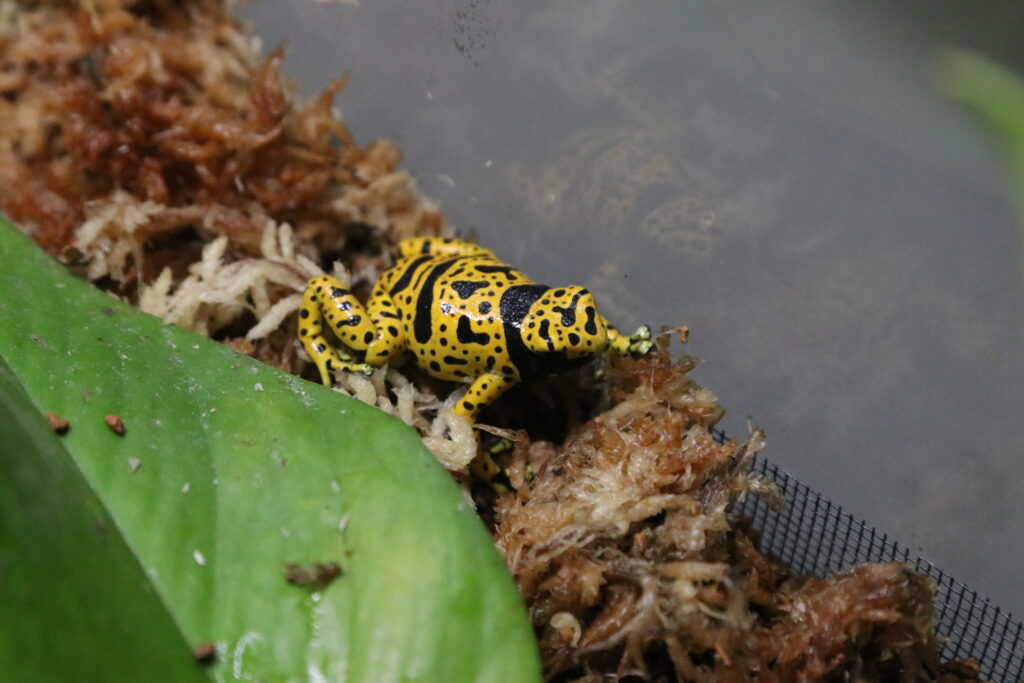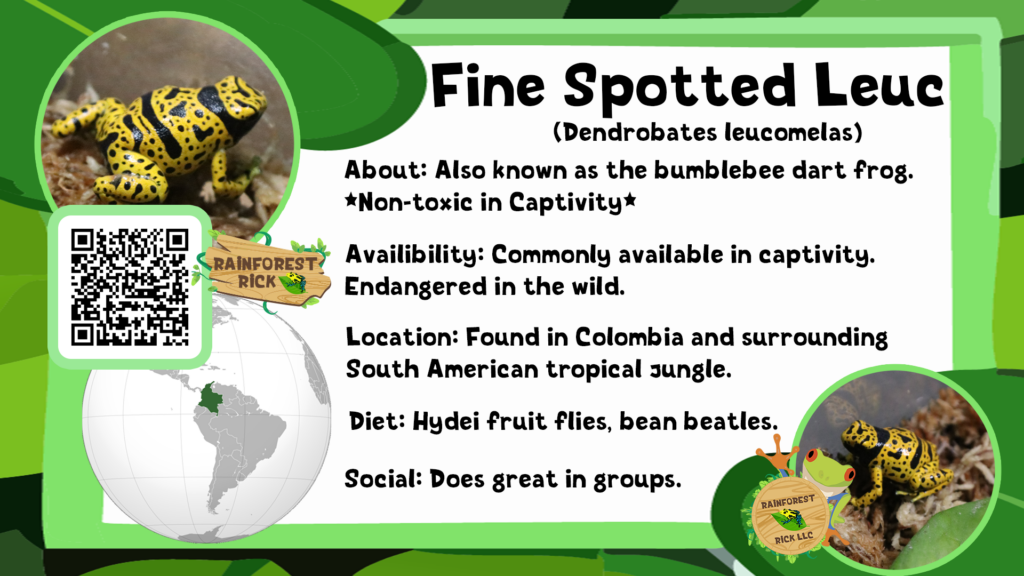Fine Spot Leuc Care Guide

Here’s what works for us as a care guide for Dendrobates leucomelas ‘Fine Spot’ – Bumblebee Dart Frog:
Special Notes: If they eat fire ants and certain beetles in the wild, their skin becomes poisonous! However, this poison is all diet-based. In captivity they are completely non-toxic and harmless. In the hobby, Dendrobates leucomelas are often called bumblebee dart frogs, or simply ‘leucs’.
The ‘Fine Spot’ tag refers to the fine black spotting that covers these frogs as adults, as opposed to the black bands in most other morphs (color types). In the wild, this morph is found in Venezuela. As the frog ages over 2-3 years, many of the dark areas will break up into tiny black spots.
Great beginner frog: They are relatively easy to care for, making them suitable for beginners. Diurnal, meaning they are awake during the day and sleep at night.
Bold: They are known for their bold and active behavior, making them interesting to observe.
Easy to breed: With proper care and setup, they can breed readily in captivity, though they may tend to be rather “seasonal,” with on and off months.
Loud call: Adult males produce a loud, pleasant call during the day, almost like a canary. This adds to the vivarium’s ambiance. They are quiet at night.
Size: Adults can grow up to around 1.25 inches for females and 1 inch for males.
Can be kept in groups: They can be housed together in groups. If breeding, females may eat each other’s eggs.
A true Dart Frog: They are a member of the dart frog family, known for their striking colors and toxic secretions (though captive bred frogs are non-toxic).
Housing: standard vivarium setup.
Vivarium Size: Like many dart frogs, a general rule of thumb is 5-10 gallons per adult frog. A 10-gallon tank is better for a single adult frog, and larger tanks like a 29-gallon or 24x18x18 vivarium are recommended for 1-3 frogs to provide ample space.
Temperature: They prefer temperatures in the low to mid 70s Fahrenheit, with a range of 65 to 80 degrees. Temperatures over 80 can be dangerous.
Humidity: They require high humidity levels, ideally between 70-100%. They can tolerate lower humidity down to 50% for short periods with access to a shallow dish of water.
Feeding: They eat flightless melanogaster fruit flies when young and can consume the larger hydei fruit flies and crickets up to 1/4 inch when adults. These should be dusted with a calcium-vitamin supplement such as Repashy Calcium Plus. (Per adult: ~20 hydei fruit flies every 2-3 days). A banana slice in the vivarium makes for a great feeding station and helps keep the fruit flies in one area.
Sexing: ‘Fine Spot’ Leucs are not sexable until 10-12 months of age. Male leucs tend to be smaller than females, which often appear both longer and wider. Females may be more “pear-shaped” when mature.
Social Behavior: They can be kept in groups, but adequate space should be provided.
Age: Capable of living more than 20 years in captivity under ideal conditions, a lifespan of 10-15 years is more common.
Handling: Poison Dart Frogs should not be handled except when they are being moved to or from a vivarium. Handling more than that may cause a seizure and sometimes death!

